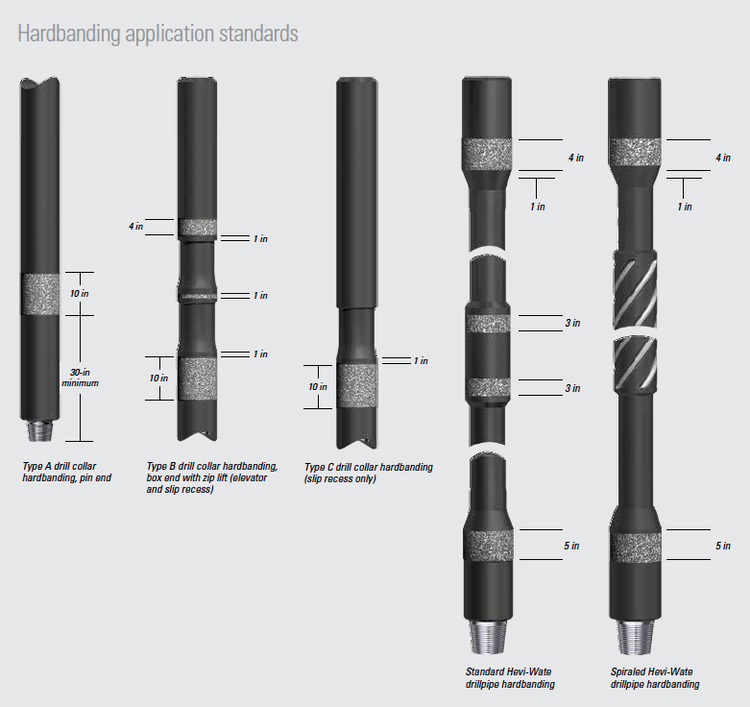Introduction Of Hardbanding
Introduction Of Hardbanding

![]()
Hardbanding is wear-resistant metallic coating Hardbanding is the process of laying on a coating or surface of hard metal] on a softer metal part. Applied by gas metal arc welding on the external surface of drill pipe tool joints to increase drill pipe tool joints, collars, and heavy weight drill pipe service life and to reduce casing string wear from wear associated with drilling practices.
Hardbanding is applied where rotational and axial friction associated with drilling and tripping create excessive abrasive wear between the drill string and the casing or between the drill string and rock. Hard alloy overlays are applied to the points of greatest contact. Usually, the hardbanding is applied to the tool joint as it is the widest part of the drill string and will make contact with the casing the most often.
Initially, tungsten-carbide particles were dropped into a mild-steel matrix, remaining the industry standard for many years. However, well owners soon realized that while the tool joint was well protected, the tungsten-carbide particles were often acting as a cutting tool against the casing, causing extreme rates of wear and occasional total casing failure. To address the critical need for a casing-friendly hardbanding product that could adequately protect tool joints and other downhole tools.
Types of hardbanding:
1. Raised hardbanding (PROUD)
2. Flush hardbanding (FLUSH)
3. Hardbanding on central upset of Drill Collar and Heavy Weight Drill Pipe
Hardbanding functions:
1. Protects drill pipe tool joint against abrasion and wear and extends DP service life.
2. Protects tool joints against thermal cracking.
3. Reduces casing wear.
4. Reduces drilling friction losses.
5. Hardbanding allows the use of slim OD welded tool joints.

Hardbanding applications:
1. Hardbanding is applicable to drill pipes of all sizes and grades.
2. Hardbanding may be applied on new and u sed tubular.
3. Hardbanding can be applied on drill pipe tool joints made per GOST R 54383-2011 and GOST R 50278-92 or per technical specifications of national pipe mills, and on drill pipe tool joints made per API Spec 5DP.
4. Hardbanding may be applied on drill pipes with various types of tool joints, including double-shoulder tool joints.
5. Hardbanding may be applied on cold-resistant drill pipes and sour-service DP.
Hardbanding can be applied on tubular of the following types and sizes:
1. Pipe body OD 60 to 168 mm, length up to 12 m, OD of welded tool joints per DP documentation.
2. Hardbanding is applied on upsets of HWDP, on tool joint areas of HWDP, and DC of all types and sizes.
3. Hardbanding is also applied to the central upset of HWDP and DC.
4. Hardbanding can be applied on tool joints before they are welded to the drill pipe.
Savings generated by the use of drill pipe with hardbanding:
1. Drill pipe service life is extended up to 3 times.
2. Tool joint wear is reduced by 6–15 % depending on the type of hardbanding applied.
3. Casing wall wear is reduced by 14–20 % as compared to wear caused by plain tool joints.
4. Reduces well friction losses.
5. Required rotary torque is reduced, thus reducing energy consumption.
6. Improves drilling performance.
7. Reduces drilling time.
8. Reduces frequency of drill string and casing string failures in drilling operations.





















